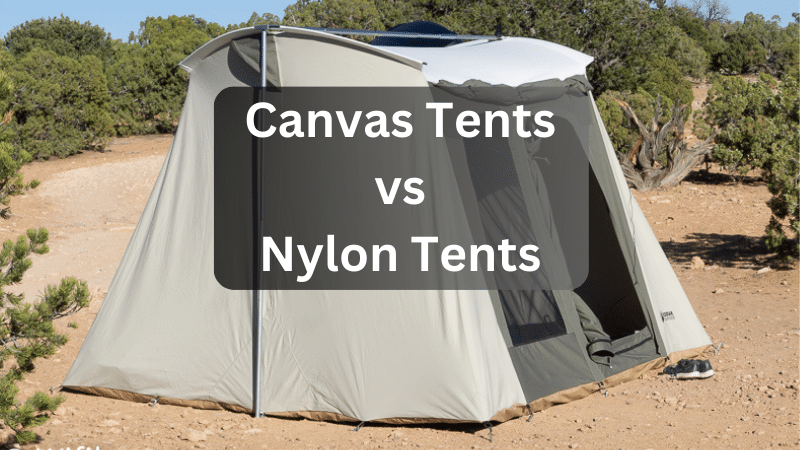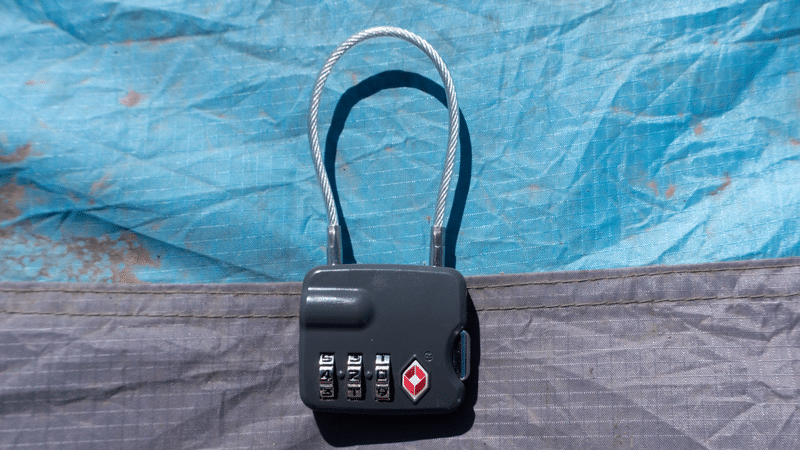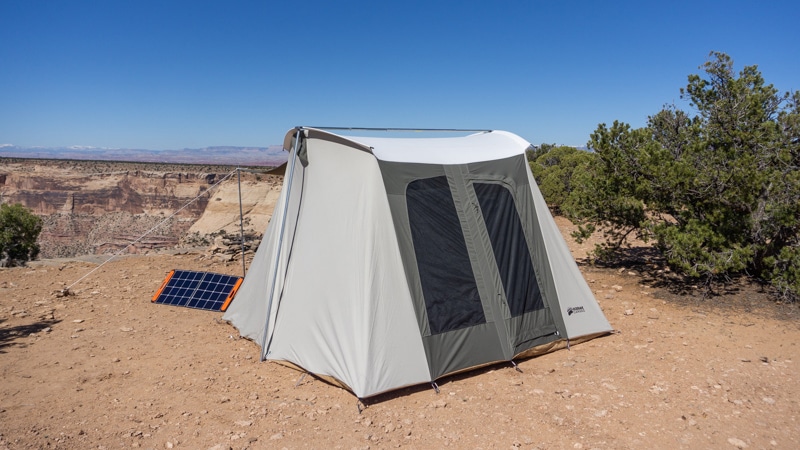Living and working from a tent is tough, but I’ve been trying it out.
The first google result for this query showed me a happy couple playing cards in a backpacking-sized tent.
Don’t take their advice.
The one time I used a backpacking-sized tent it was because my main canvas tent got destroyed.
Here’s a gallery of what it actually looks like living out of a tent. And then below I’ll show what happens when living out of a tent goes wrong.
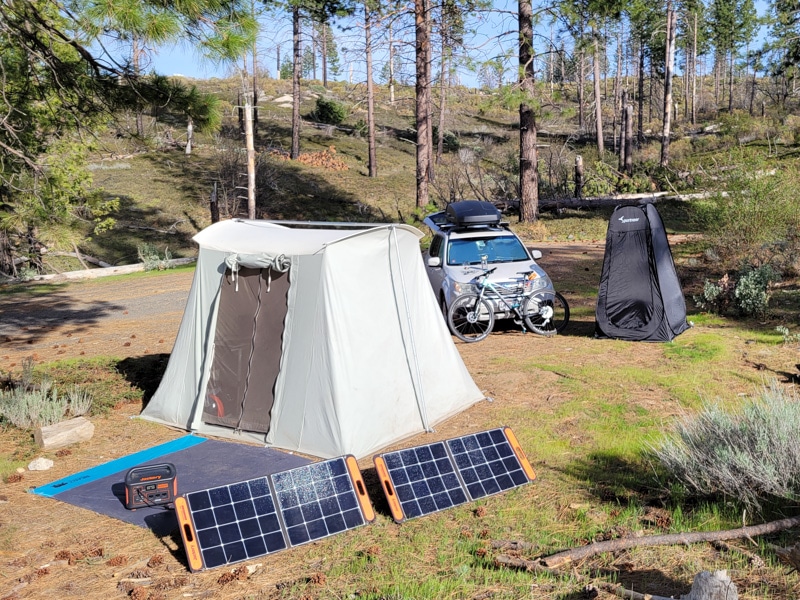
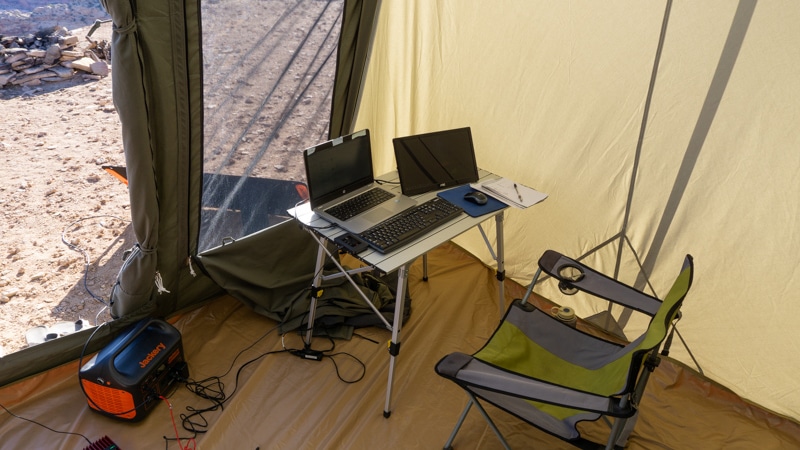
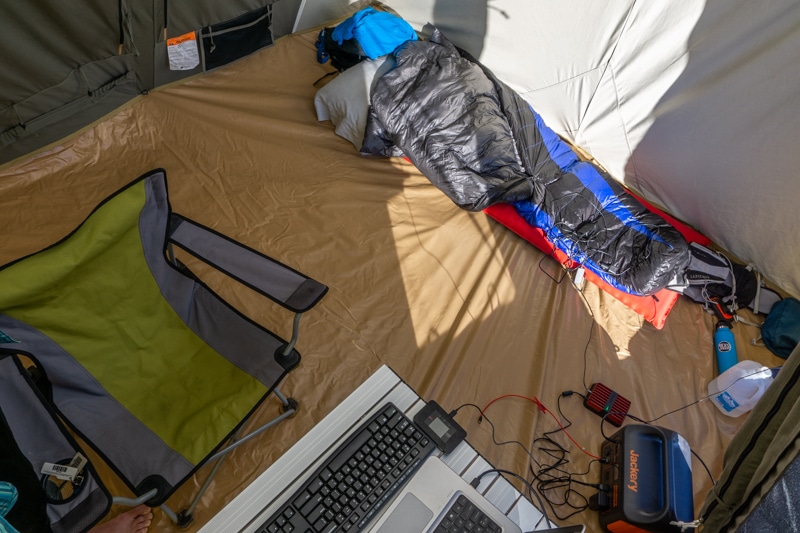
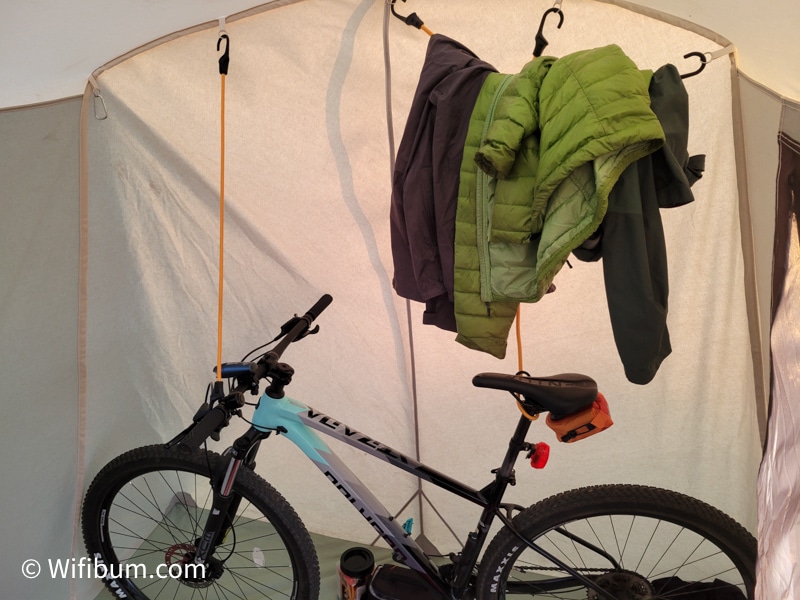

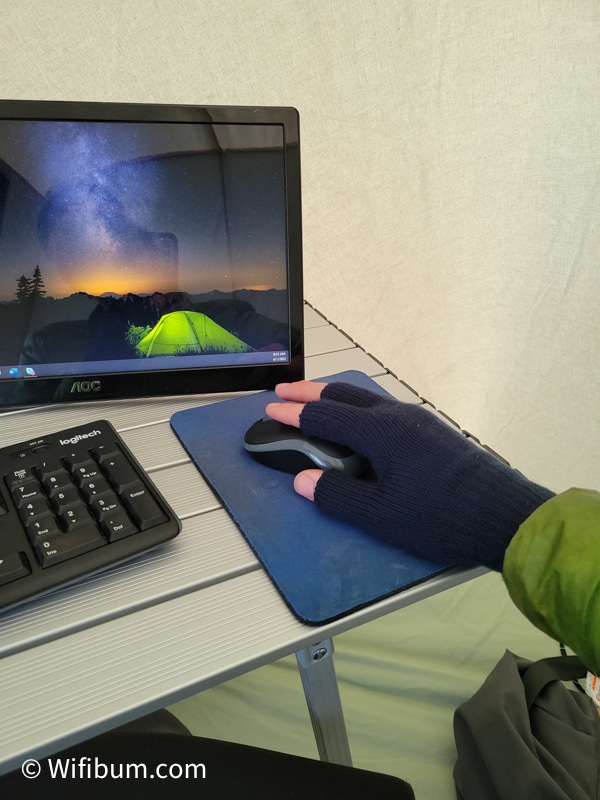
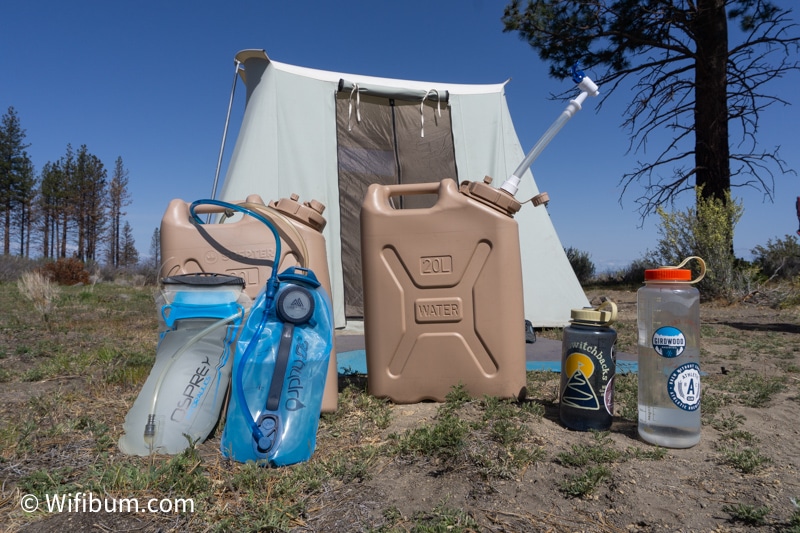
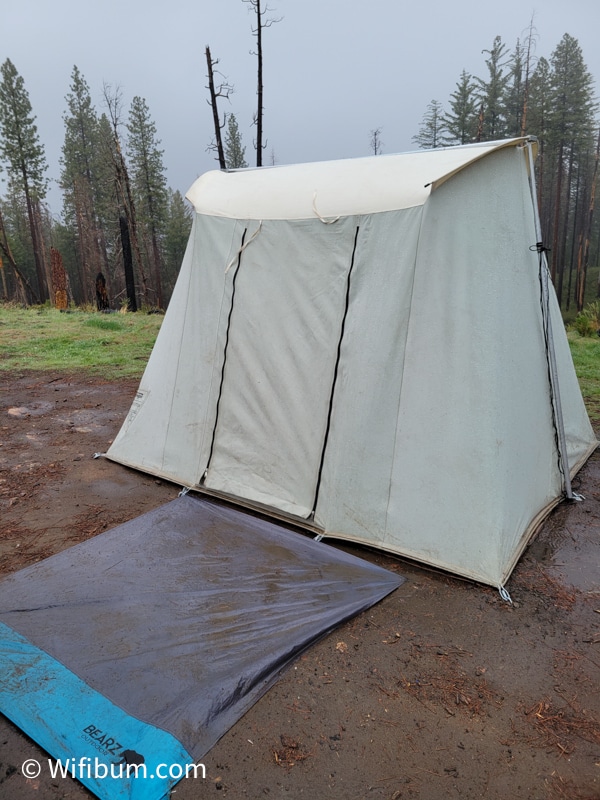
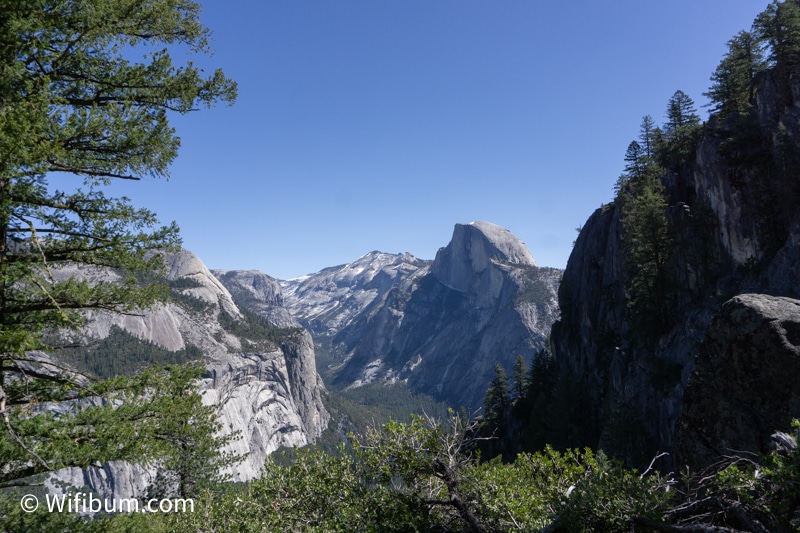
It’s all fun and games until you come back to this:
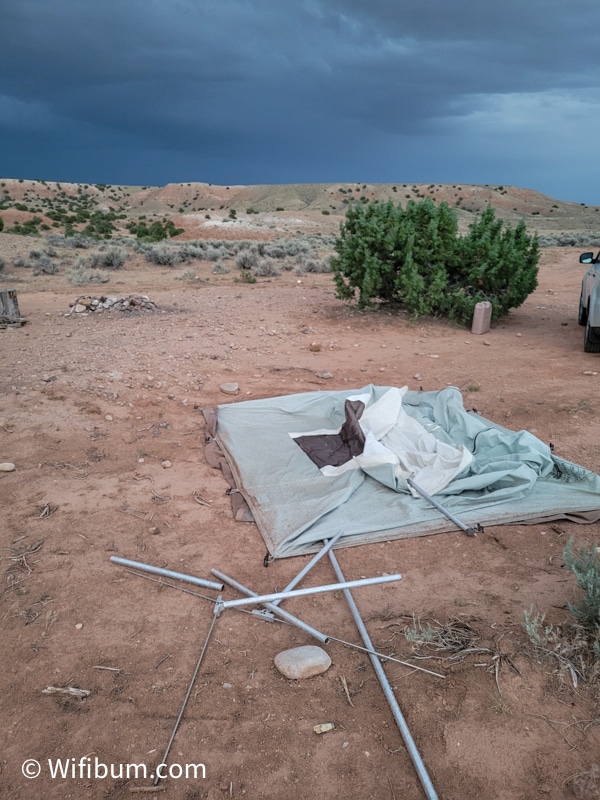
And then have to go to Plan B, which is not a very good plan.
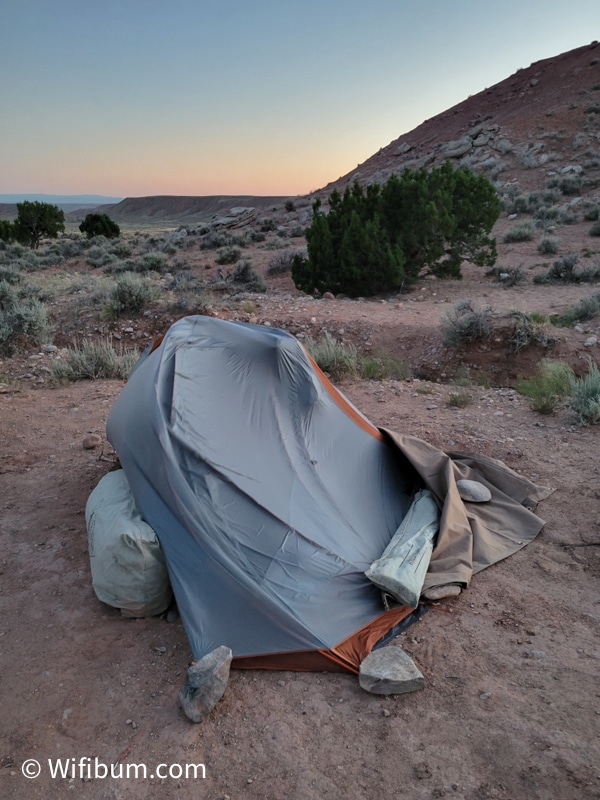
I figure I should add my own real life experience so some dummy out there doesn’t buy an REI Quarter-Dome and try to live out of it for fun like some articles suggest.
View Canvas Tent Buying Guide
